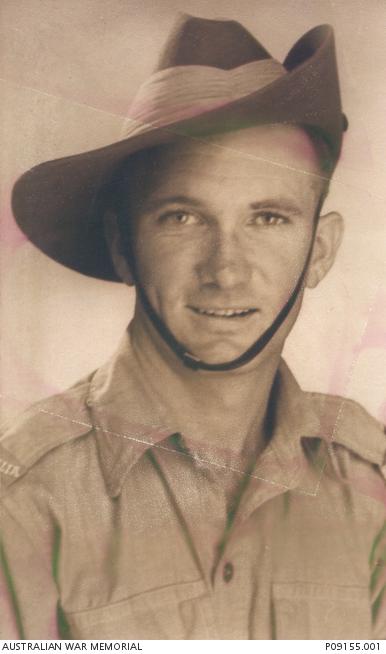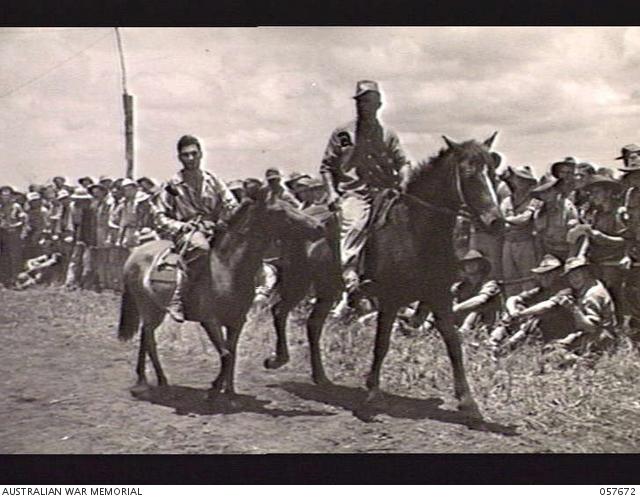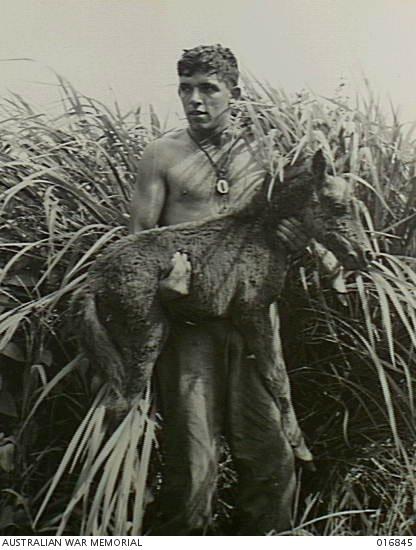Scarlet and the Village Maiden Handicap
Around Australia racing excitement is reaching fever pitch in anticipation of next week’s Melbourne Cup. That day full of champagne, sunlight glinting or raindrops sploshing on the jockeys’ colours, the smell of clods of turf being turned up as the horses pound along ...
Back in 1945 a “Pony Race Meeting” to be held on June 16 in Dutch New Guinea was similarly anticipated. It was scheduled to begin at 1330 hours, with eight races followed by a screening of “The Man Who Came To Dinner” starring Bette Davis and Monty Woolley.
Corporal Errol Coates, 82 Wireless Section, had started preparations weeks before. He had trained a Timor pony for the event. These were small ponies about 12 hands high (just over 48 inches or 122 cm). Coates fed his pony on crushed army biscuits for protein. Coates was to ride on the day and like the other jockeys he pulled together his “colours” from borrowed uniform items. An air force or army shirt overlain with someone else’s singlet, with another person’s hat constituted a jockey’s “colours”.

Studio portrait of NX140970 (N223365) Corporal (Cpl) Errol Joseph Coates, 82 Australian Wireless
The race program, which was sold for 25 cents, tells us a lot about the race meeting. The officials were presided over by Warrant Officer Thompson. The Bookmakers Supervisor was Warrant Officer Kell and Lieutenant Lee was the race starter.

"Pony Race Meeting" programme, Dutch New Guinea 1945. (Souvenirs 19/3/26)
Corporal Coates rode in seven of the races that day and managed a place four times. His mounts included “Encounter Lass” for the Gunners’ Trial Handicap, and “Powder Puff” in the Biscuit Handicap. His finest moment came on “Scarlet” when he won the “Village Maiden”, Race no. 2.
Coates came from a racing background. His maternal grandfather was a horse trainer and he and his younger sister Betty Lane grew up at Randwick. Coates himself was never a professional, but was a frequent amateur jockey in country race meets as well as a good showjumper. Betty became a trainer and was the first woman to hold a Number One Trainers Licence in Australia.
You might ask where Corporal Coates got his horse in Dutch New Guinea? Horses were a ubiquitous sight ferrying supplies for the forces. Timor ponies, a sturdy breed developed originally on the island of Timor, were amongst the local animals used.

Dutch New Guinea. Gunner Lloyd Moore of Dubbo, NSW, with a small 'Timor-pony' foal he has just helped through the swamps and tall swamp grass. These ponies breed prevalently in the swamps.
Published and Digitised Collections hold an array of Second World War racing programs from Europe, the Middle East and SWPA in the Souvenirs collection. From Merauke to Heliopolis, it could easily be said that where there was an Australian, there was a horse race!